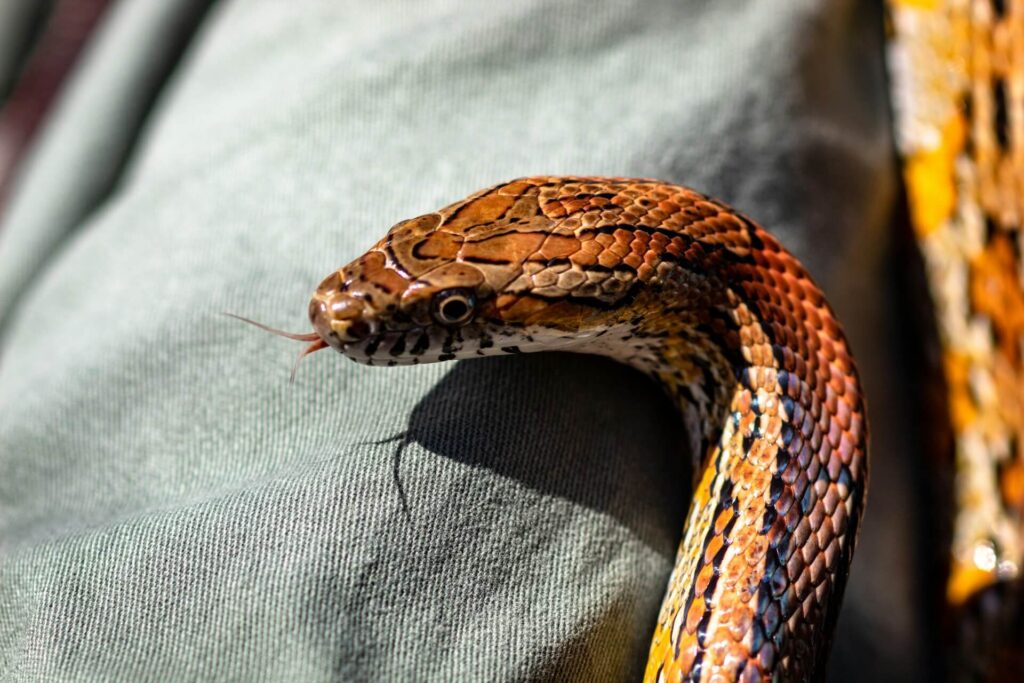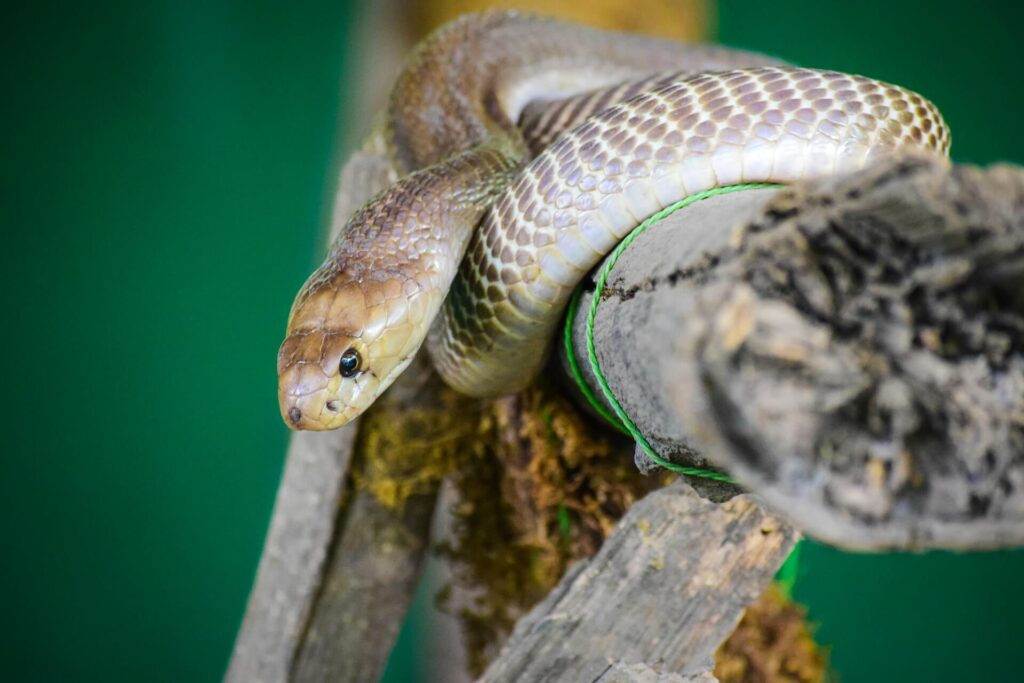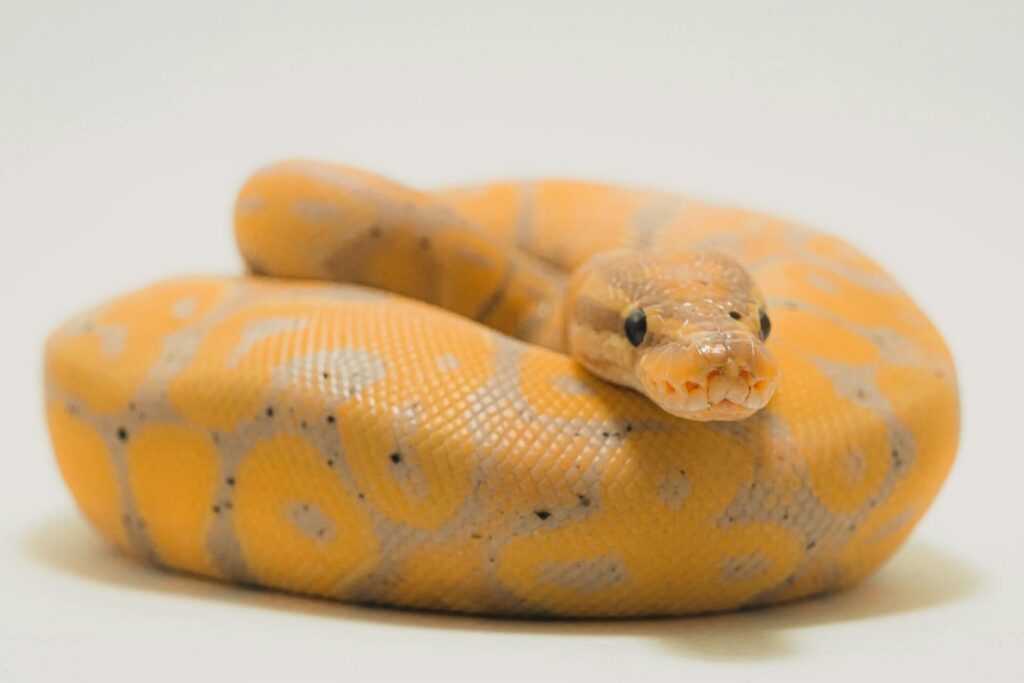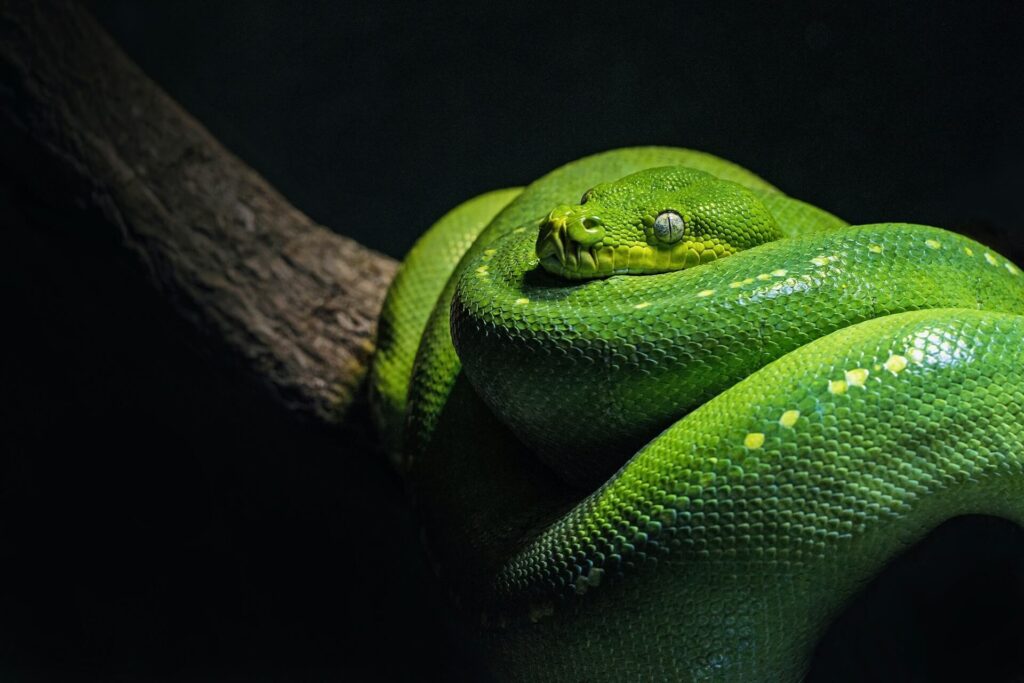The Best Pet Snakes and Tips to Take Care of Them Safely
May 13, 2024

As an Amazon Associate, Modded gets commissions for purchases made through links in this post.
Cats and dogs are great, but sometimes, you may want something a little more exotic. With their beautiful patterns, huge diversity and undeniable cool factor, snakes are a great option. Still, some are easier to take care of than others, so you’ll want to know the best pet snakes ahead of time.
Your reptilian pal should be gentle, safe and relatively easy to feed and keep contained. Here are 10 that fit that description.

1. Corn Snakes
Corn snakes are arguably the best pet snakes for most people. Sometimes called red rat snakes, these little guys come in orange and red patterns, are docile and can live for 15 to 20 years if you take care of them.
These reptiles aren’t picky eaters and require an easy 75-to-95-degree enclosure — think of replicating their natural habitat in the southwest U.S. While there’s no such thing as a social snake, corn snakes don’t stress out easily. That’s good news if you have other pets, as you should socialize your dog with other animals in your home.
2. Rosy Boas
Rosy boas are another easy-to-care-for snake species from the southwest. Their distinct striped pattern makes them one of the more eye-catching pets out there, and they rarely grow longer than three feet.
Like corn snakes, rosy boas are as docile as they come and don’t have stringent space or heat requirements. They eat mice like many of the snakes on this list, but you can use frozen mice from pet stores, as they aren’t picky.

3. Hognose Snakes
Hognoses as a group are some of the other best pet snakes to keep. Unlike the rosy boa and corn snake, this isn’t a specific species but a group of snakes from three different genera sharing a distinctive upturned nose. In most cases, though, when people talk about pet hognoses, they’re talking about the Heterodon genus, which is native to the U.S.
Many hognose snakes don’t grow beyond two feet, so you won’t need much space. They’re a little more defensive than rosy boas and corn snakes but are still docile, especially when you care for them properly.
4. California Kingsnakes
For something a little flashier, look no further than the California kingsnake. Kingsnakes, as a whole, are some of the most widespread snakes in the U.S., and anything that common won’t need too much attention to live a long, healthy life.
The California kingsnake has a beautiful striped pattern featuring bold bands of contrasting colors. It also has a manageable size of up to four feet and, as you might guess from how widespread it is in nature, doesn’t need extreme housing conditions.
5. Milk Snakes
Milk snakes are another species of kingsnake. These are some of the best pet snakes not only for their easygoing nature but their stunning colors. While their patterns are largely similar to the California kingsnake, they feature vibrant reds and yellows in their scales.
Caring for a milk snake is about the same as a California kingsnake. They need a small-to-medium enclosure with heated areas ranging from 75 to 92 degrees, which is easy with a heat lamp or two.

6. Ball Pythons
While all the snakes on this list make great pets, you’ll struggle to find one more popular than the ball python. These snakes get their name from a habit of curling up into a ball — something stemming from their shy, gentle nature. They’re also beautiful, featuring a wide range of different patterns.
Other python species can get huge, but ball pythons stay a manageable four to five feet. Like many snakes, they only require feeding every one to two weeks, but ball pythons can be picky eaters. You’ll have to feed them fresh mice — nothing frozen or stale — which is why they don’t rank higher here.
7. Garter Snakes
Ball pythons may be the most common pet snake, but if you’ve seen a snake in the wild, there’s a good chance it was a garter snake. This genus holds a ton of diversity across different habitats, making them one of the more common snakes in the U.S.
Gartner snakes are small, typically gentle and easy to feed and care for. So why don’t they rank higher? They like to move around a lot, which can be a handful, and they may release some foul-smelling pheromones before they get used to you.
8. Carpet Pythons
Carpet pythons are a good option if you want a pet snake that’s a bit bigger. These guys can reach up to eight or nine feet, so they’ll require quite a bit of room.
Like other pythons, these snakes have beautiful patterns and are generally docile. That said, their feeding response is rather aggressive, so be careful when feeding them.

9. Green Tree Pythons
Another great pet python species is the green tree python. These snakes’ bright green scales and white spotted patterns make them one of the most unique pet snakes from a visual standpoint. They can also live upwards of 20 years, making them good long-term pets.
While green tree pythons aren’t outright aggressive, they are more defensive than other snakes on this list, so don’t try to hold them much. They also require high humidity, so they’re not quite as easy to keep as others.
10. Asian Vine Snakes
Capping this list of the best pet snakes is the Asian vine snake. Like green tree pythons, these snakes have beautiful bright green scales, but they’re much smaller, making them easier to keep.
Asian vine snakes require between 80% to 100% humidity, which makes maintaining a proper living environment a little more complicated. They also have a more specialized diet than other U.S.-native snakes and are prone to parasites, so they may need a few vet visits.
Tips for Keeping a Pet Snake
Regardless of what kind of snake you choose, you should keep a few things in mind. You’ll need an enclosure at least two-thirds the length of your snake so they have enough room to move around. All snakes also require spot heating and controlled humidity, though specifics vary between species.
Remember to clean their enclosure regularly to keep your snake comfortable. Similarly, they’ll need relatively clean water — enough for them to sit in and cool off.
You should also remember that there’s no such thing as a truly social snake. Don’t keep more than one in the same enclosure, as it’ll likely end poorly. Along those lines, it’s best to leave your snake alone most of the time. Avoid handling it more than a couple of times a week.
Remember to look up your specific snake’s behavior. Even a nonvenomous snake bite can hurt, and even docile snakes can strike if they feel backed into a wall. You may want tongs to feed them to keep your hand out of harm’s way.
Find the Best Pet Snake for You
The best pet snake depends on what you can manage and what kind of animals you like. Any species on this list is a great place to start.
Despite their more stringent habitat requirements, snakes are relatively low-maintenance pets once you set their enclosure up. Find the right snake for you today to get started.





